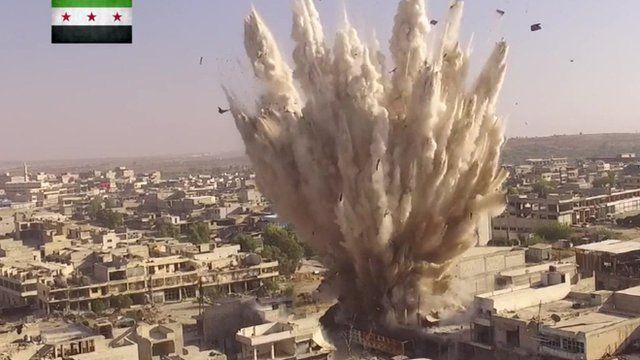The attack was conducted by Inghimasi (also called shahid and istishhadi, are forlorn hope or suicide attack shock troops utilized by several Sunni jihadist groups, such as the Islamic State of Iraq and the Levant, al-Qaeda, Jabhat al-Nusra, Tahrir al-Sham, Boko Haram, and al-Shabaab) of the Islamic State, not belonging to a specific province. The goal of the Inghimasi is to cause as much damage as possible (human and material) by carrying large quantities of weapons and ammunition to use all of them.

More on this story: Russia will exploit Crocus mass shooting for large-scale psyop
The Inghimasi tactic (meaning to dive), aims to inflict as much damage on the enemy as possible. It refers to a fighter who can become a martyr, but not necessarily. They operate in the style of special forces with even an explosive belt that they only activate when they run out of ammunition or when they feel threatened or trapped, thus to avoid capture. An Inghimasi fighter must accept a ‘no return’ policy, so must expect to die in combat, but unlike normal suicide attack forces, however, an Inghimasi can survive missions and return to base.
The operation is well organised and it cannot be ruled out that several provinces participated in the logistical and operational preparation part of the mission. In any case, it is a classic Islamic State ‘external’ operation.
In this case, one can see that they are highly trained. One can see it from the way they move, the distance between them, the way they use their weapons, the tranquillity and precision of how they operate. This was certainly not their first operation.
There is great excitement and enthusiasm among the communities of IS supporters and sympathisers. Actually not only in those. Also in those not linked to the Islamic State, but of other groups made up of Chechens, Dagestanians, Ingush, Tajiks and Uzebeks. Although many of these are far from the ideologies of IS, they are happy about the blow taken by Russia.
Russia has plenty of enemies in the world of salfism-jihadist, jihadist and Islamist armed groups (many of which operate in Syria).
This operation is fully part of the Islamic State’s revenge strategy. One of IS’s five military strategies is precisely to target Christians in revenge against the so-called ‘Crusaders’. Furthermore, I want to mention that Russia is considered an ‘oppressor and crusader’ on a part with the US and European countries.
The Islamic State’s anti-Russian propaganda is more than decades old. In the past, IS has produced Russian-language magazines and editorials to criticise and condemn Russia, threaten and provoke it. This is nothing new. Attacks in Russia have been taking place and claimed by IS in Russia for several years. As researcher and analyst Aaron Zelin mentioned in his work mapping IS attacks, outside the regions of Chechnya/Dagestan/Ingushetia there have been several attacks: August ’16: Balashikha, October ’16: Nizhny Novgorod, April ’17: Khabarovsk, August ’17: Surgut, December ’17: St. Petersburg, May ’18: Nizhny Novgorod, May ’18: Neftekamsk, April ’19: Kolomna. The Russian embassy in Kabul was attacked in 2022 by ISK.
The reasons for IS’s struggle with Russia are many, support for Assad and operations in Syria, operations and counter-terrorism in counter-IS in Africa, relations with the Taliban in Afghanistan, 30 years of oppression in the North Caucasus, and strong influence in former Soviet areas, particularly Tajikistan and Uzbekistan.

Finally, it should not be forgotten that the Islamic State has been recruiting in Russia and former Soviet areas for years. Russia is a target and will be again. Contrary to what many claim, the Islamic State is alive, struggling but alive, and still has logistical and support networks to strike anywhere.




